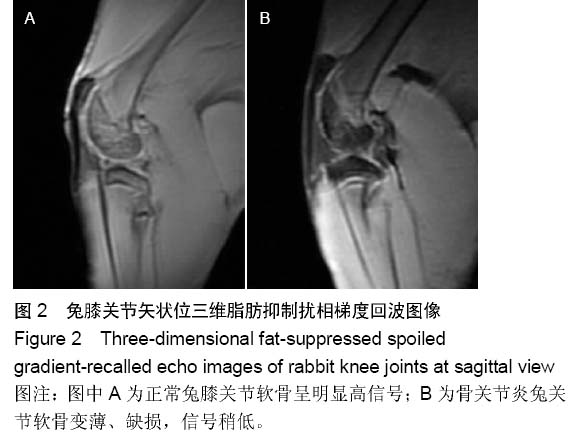| [1] Yamada K, Healey R, Amiel D, et al. Subchondral bone of the human knee joint in aging and osteoarthritis. Osteoarthritis Cartilage. 2002; 10:360- 369.
[2] Tomoya M, Hiroshi H, Toru O, et al. Role of subchondral bone in osteoarthritis development: a comparative study of two strains of guinea pigs with and without spontaneously occurring osteoarthritis. Arthritis Rheum. 2007; 56:3366- 3374.
[3] Radin EL, Rose RM. Role of subchondral bone in the initiation and progression of cartilage damage. Clin Orthop Relat Res. 1986; 213:34-40.
[4] Okazaki R,Sakai A,Ootsuyama A,et al.Apoptosis and p53 Expression in Chondrocytes Relate to Degeneration in Articular Cartilage of Immobilized Knee Joints. Rheumatol. 2003; 30(3):559-566.
[5] 孙鲁宁,赵燕华,黄桂成,等.木瓜蛋白酶诱导膝关节骨关节炎模型兔滑膜病理变化与药物注射时间的关系[J].中国组织工程研究, 2011,15(50): 9311-9313.
[6] 周君,何成奇,郭华,等.兔膝骨关节炎合并骨质疏松症动物模型的建立[J].中国组织工程研究与临床康复, 2011,15(41): 7639-7642.
[7] Rogart JN, Barrach HJ, Chichester CO. Articular collagen degradation in the Hulth-Telhag model of osteoarthritis. Osteoarthritis Cartilage.1999; 7(6):539-547.
[8] 方锐,艾力江•阿斯拉,卢勇,等.兔骨性关节炎模型构建及早中晚期的特点[J].中国组织工程研究与临床康复, 2010,14(7): 1218-1222.
[9] 李锋,王华军,聂喜增,等.力学刺激对三维培养成年及骨关节炎模型兔软骨细胞产生糖胺多糖的对比[J]. 中国老年学杂志, 2013, 33(20): 5061-5063.
[10] 李忠,杨柳,戴刚等.关节镜下半月板部分切除制备骨关节炎动物模型[J].第三军医大学学报, 2007, 29(10):919-921.
[11] Anetzberger H, Mayer A, Glaser C, et al. Meniscectomy leads to early changes in the mineralization distribution of subchondral bone plate. Knee Surg Sports Traumatol Arthrosc. 2014; 22(1):112-119.
[12] Marijnissen AC, van Roermund PM, TeKoppele JM, et al. The canine groove model, compared with the ACLT model of osteoarthritis. Osteoarthritis Cartilage. 2002; 10(2):145-155.
[13] David B. Anatomy and physiology of the mineralized tissues: role in the pathogenesis of osteoarthrosis. Osteoarthritis and Cartilage. 2004; 12:20- 30.
[14] 刘兴漠,项禹诚,孙青,等.周期性张应力对骨性关节炎软骨细胞p38 MAPK表达及其磷酸化的影响[J].中国病理生理杂志, 2012, 28(2): 362-365.
[15] McKinley TO, Bay BK. Trabecular bone strain changes associated with subchondral stiffening of the proximal tibia. J Biomech. 2003; 36(2):155-163.
[16] Day JS, Ding M, Vander Linden JC, et al. A decreased subchondral trabecular bone tissue elastic modulus is associated with pre-arthritic cartilage damage. J Orthop Res. 2001; 19(5):914-918.
[17] Lampropoulou-Adamidou K, Dontas I, Stathopoulos IP, et al. Chondroprotective effect of high-dose zoledronic acid: An experimental study in a rabbit model of osteoarthritis. J Orthop Res. 2014; 32(12):1646-1651.
[18] Harada S, Rodan GA. Control of osteoblast function and regulation of bone mass. Nature. 2003; 423:35-41.
[19] Hulejova H, Baresova V, Klezl Z, et al. Increased level of cytokines and matrix metalloproteinases in osteoarthritic subchondral bone. Cytokine. 2007; 38(3):151-156.
[20] Hilal G, Massicotte F, Martel-Pelletier J, et al. Endogenous prosta-gland in E2 and insulin-like growth factor 1 can modulate the levels of parathyroid hormone receptor in human osteoarthritic osteoblasts. J Bone Miner Res. 2001; 16:713 – 721.
[21] Orth P, Cucchiarini M, Wagenpfeil S, et al. PTH [1-34]-induced alterations of the subchondral bone provoke early osteoarthritis. Osteoarthritis Cartilage. 2014; 22(6):813-821.
[22] Daniel L. The role of bone in the treatment of osteoarthritis. Osteoarthritis and Cartilage. 2004; 12:34- 38.
[23] Mori S. Micro-damage and bone quality. Clin Calcium. 2004; 4:594- 599.
[24] Huebner JL, Hanes MA, Beekman B, et al. A comparative analysis of bone and cartilage metabolism in two strains of guinea-pig with varying degrees of naturally occurring osteoarthritis. Osteoarthritis Cartilage. 2002; 10(10):758-767.
[25] Saito M, Sasho T, Yamaguchi S, et al. Angiogenic activity of subchondral bone during the progression of osteoarthritis in a rabbit anterior cruciate ligament transection model. Osteoarthritis Cartilage. 2012;20(12):1574-1582.
[26] Pelletier JP, Boileau C, Brunet J, et al. The inhibition of subchondral bone resorption in the early phase of experimental dog osteoarthritis by licofelone is associated with a reduction in the synthesis of MMP-13 and cathepsin K. Bone. 2004; 34(3):527-538.
[27] Hayami T, Pickarski M, Zhuo Y, et al. Characterization of articular cartilage and subchondral bone changes in the rat anterior cruciate ligament transaction and meniscectomized models of osteoarthritis. Bone. 2006; 38(2):234-243.
[28] Orth P, Cucchiarini M, Kaul G, et al. Temporal and spatial migration pattern of the subchondral bone plate in a rabbit osteochondral defect model. Osteoarthritis Cartilage. 2012; 20(10):1161-1169.
[29] He D, Yin M, Luo Y, et al. Research progress of protective effects of alendronate on articular cartilage in osteoarthritis. Zhongguo Xiu Fu Chong Jian Wai Ke Za Zhi. 2012;26(10):1187-1190.
[30] Zhang L, Hu H, Tian F, et al. Enhancement of subchondral bone quality by alendronate administration for the reduction of cartilagedegeneration in the early phase of experimental osteoarthritis. Clin Exp Med. 2011;11(4):235-243. |
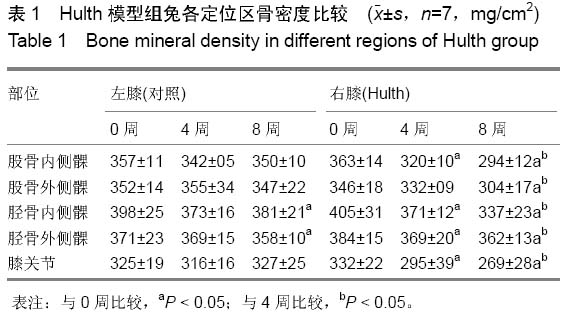
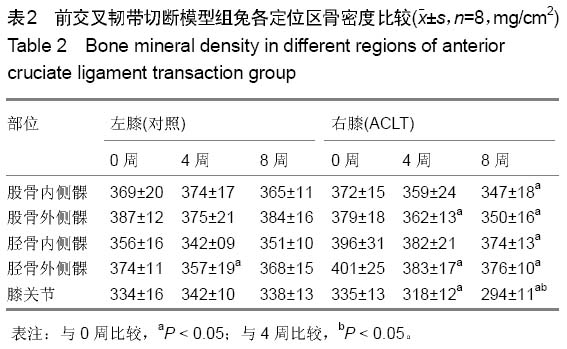
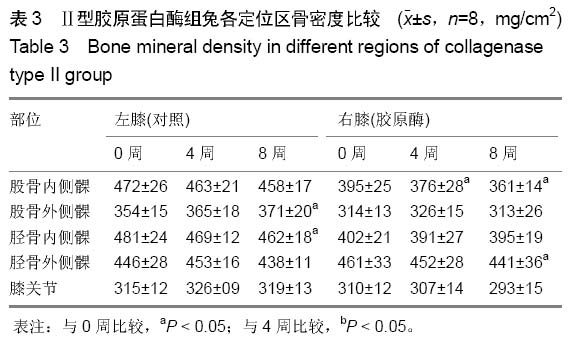
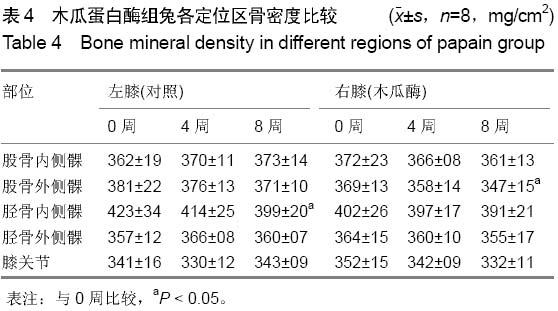
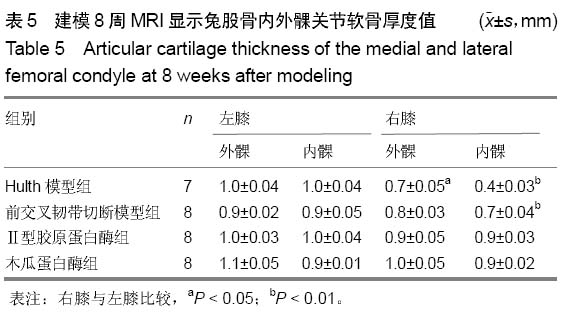
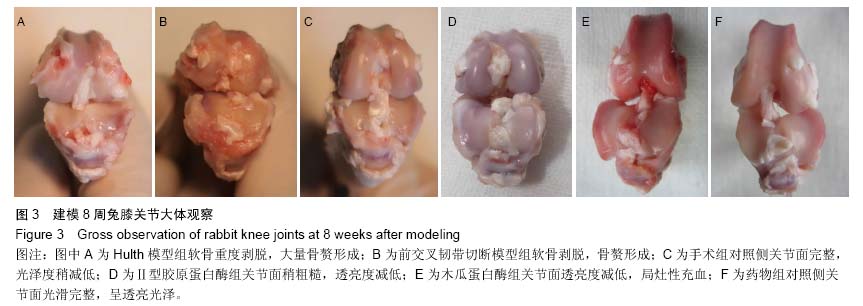
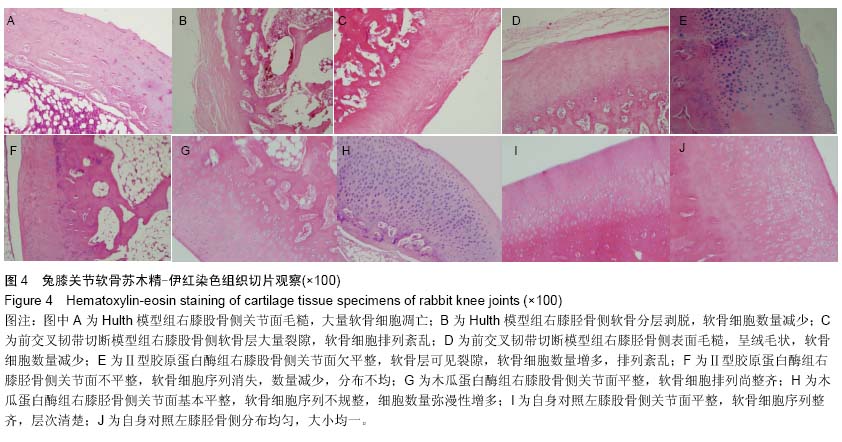
.jpg)
